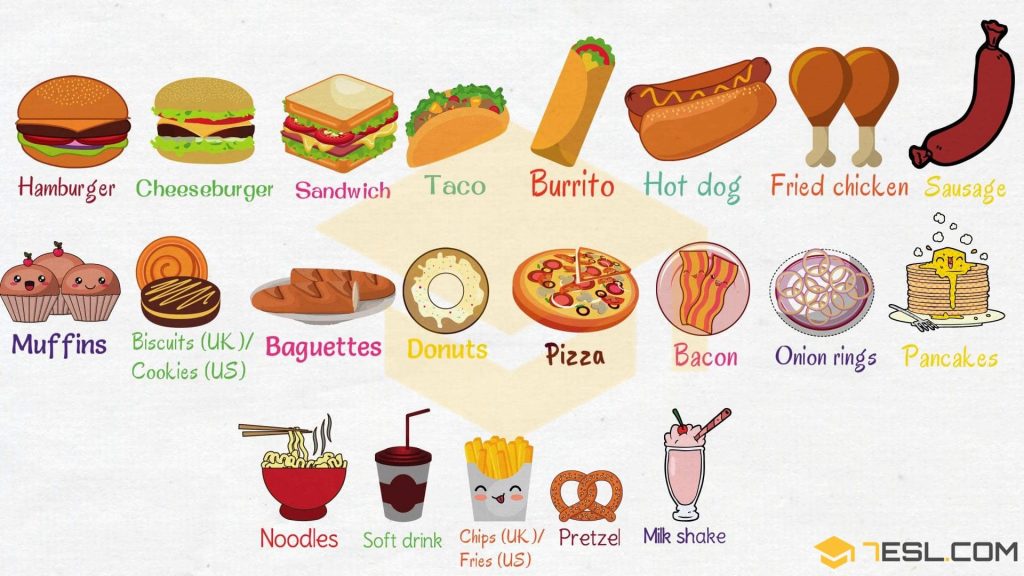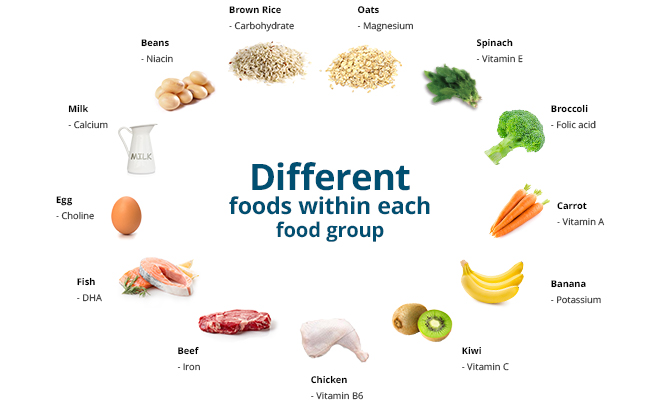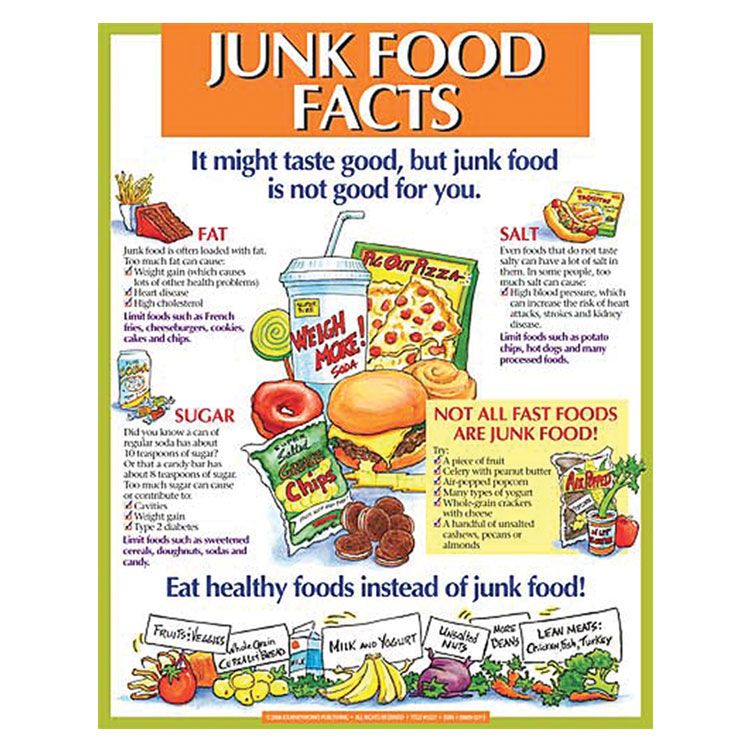Different kinds of baby food
Best Weaning Food For Your Baby (6-12 Months)
Healthy eating starts at home. As parents, we must offer healthy food choices to our kids - remember, they can’t ask for pizza and French fries unless we’ve introduced them to those foods! So if you want your kids to develop healthy eating habits, you need to catch them young - and weaning foods are the place to start.
According to researchers, kids’ early taste preferences (for fruits & veggies or sugary treats) are lasting. This means, in terms of quality, the diet must be cast in the first year itself. Weaning foods should be your aim as well as a medium to introduce your kids to a variety of fruits and vegetables. Set up their high chair, grab a bib, buy some kid-friendly cutlery and settle down with a diet plan for your baby.
It requires a little patience and time but the result, in the long run, is highly rewarding. Through weaning foods, your child will develop an emotionally strong relationship with food. As an adult, s/he would be able to appreciate the nourishing aspect of food and is also less likely to fall into the trap of fad diets and food disorders.
Apart from the type of food, the quantity of food for babies while weaning is another question that keeps popping up in every mother’s mind. One may follow the following recommendation for the quantity of weaning food to be offered to the infant, as suggested by the Paediatric Dietetics Department at AIIMS Hospital New Delhi.
Age In Months
- 5-6 Months
- 6-7 Months
- 7-8 Months
- 9-12 Months
Quantity Of Weaning Foods
- Few spoons to 30 ml at a time
- 50-75 ml/g at a time
- 75-100 ml/g at a time
- 100-150 ml/g at a time
There are several types of weaning foods to choose from. Here is a month-wise chart.
Weaning foods at 6 months: “Weaning foods 6 months” is one of the most common Google searches for new patents. And it can be confusing figuring out what to feed your baby. What you need to keep in mind is to only change one meal of a baby at this time and then gradually introduce foods in other meals. It’s good to introduce new baby weaning foods at lunchtime. Start with rice water. Boil rice for the family. Do not throw away the water. Collect it in a clean bowl and give 2-3 teaspoons to your baby initially. Gradually increase the number of teaspoons. Barley water and thin dals can also be given. Start with single vegetable soups and fruit juices.
And it can be confusing figuring out what to feed your baby. What you need to keep in mind is to only change one meal of a baby at this time and then gradually introduce foods in other meals. It’s good to introduce new baby weaning foods at lunchtime. Start with rice water. Boil rice for the family. Do not throw away the water. Collect it in a clean bowl and give 2-3 teaspoons to your baby initially. Gradually increase the number of teaspoons. Barley water and thin dals can also be given. Start with single vegetable soups and fruit juices.
Weaning foods at mid 6 months: Introduce ground, cooked, single-grain cereal or infant cereal with breast milk or formula. Mashed banana, potato, yam, sweet potato, carrot, spinach, apple and pear are some good options. Cooked and pureed meat or poultry can also be considered. Foods containing allergens (such as peanuts, hens' eggs, gluten and fish) can be introduced from around 6 months of age, one at a time and in small amounts so that one can spot any reaction. Full-fat dairy products, such as pasteurised cheese and plain yoghurt can be given from around 6 months of age. Choose products with no added sugar. Move on to 2 meals/day and then 3 meals/day. Rice and moong dal thin khichdi with 1/2 tsp of ghee is an ideal lunch for your baby.
Full-fat dairy products, such as pasteurised cheese and plain yoghurt can be given from around 6 months of age. Choose products with no added sugar. Move on to 2 meals/day and then 3 meals/day. Rice and moong dal thin khichdi with 1/2 tsp of ghee is an ideal lunch for your baby.
Weaning foods at 6-7 months: When it comes to cereals and pulses do ensure these are in a 3:1 ratio. All fruits and vegetables in thick puree forms can be given now if the baby is adapting well. Remember, babies do not need salt or sugar added to their food (or cooking water).
Vegetable Puree
Weaning foods at 7 - 9 months: Baby will gradually move towards eating 3 meals a day (breakfast, lunch and dinner), in addition to their usual milk feeds, which may be around 4- 5 meals a day. As the baby eats more solid foods, they may want less milk at each feed or even drop the milk feed altogether. Gradually increase the amount and variety of food to ensure they get the energy and nutrients they need. As infants become more confident eaters, remember to offer more finger foods.
As infants become more confident eaters, remember to offer more finger foods.
Providing finger foods as part of each meal helps to encourage infants to feed themselves, develop hand and eye coordination, and learn to bite off, chew and swallow pieces of soft food. Increase the quantity according to your infant’s interest and appetite – offer foods from all 4 food groups. An infant may need to try many times before learning to like a new food/taste. Always encourage self-feeding and babies to learn by coping: eat with infant and include a family meal. Babies learn wonderfully by watching adults around them.
Weaning foods at 9 months of age: High-fiber foods can be introduced at this time such as semolina, oats or fruits with peels such as apples or pears. You can also consider sliced and quartered bananas or small pieces of other soft fruits, whole cooked beans and well-cooked, minced or finely chopped meat, poultry or fish. Dalia porridge with or without milk, oats porridge with apple and milk, rajgira porridge and rawa upma are excellent one meal options that score high on nutrition.
Dalia porridge with or without milk, oats porridge with apple and milk, rajgira porridge and rawa upma are excellent one meal options that score high on nutrition.
Weaning foods at 10-12 months of age: By now, your baby should be enjoying a wide range of tastes and textures. They should be able to manage a wider range of finger foods and will be increasingly able to pick up small pieces of food and move them to their mouth. They will use a cup or glass with more confidence. As the baby grows, eating together as a family encourages them to develop good eating behaviour. Reduce milk feeds one by one to two feeds per day at 11-12 months. You can introduce sugar and salt from 10 months onwards because before that babies don’t need any extra sugar and salt. The invisible salt and sugar in vegetables and fruits are sufficient for them.
Boiled Vegetables
Weaning foods at 12 months: Small pieces of fruit and cooked vegetables should be the dietary staple of your toddler. A child may also need two healthy snacks in between meals. The World Health Organization recommends that all babies are breastfed for up to 2 years or longer. One can keep breastfeeding for as long as suits you both, but the child will need less breast milk to make room for more foods. After the baby completes 1 year of age, refer to a toddlers’ diet for a kid.
A child may also need two healthy snacks in between meals. The World Health Organization recommends that all babies are breastfed for up to 2 years or longer. One can keep breastfeeding for as long as suits you both, but the child will need less breast milk to make room for more foods. After the baby completes 1 year of age, refer to a toddlers’ diet for a kid.
Foods To Avoid When Weaning
Salt: The baby’s kidneys cannot process salt yet.
Honey: No honey till the baby is one as it can cause infant botulism in babies.
Sugar: Sweeten food with mashed banana or stewed dry fruits puree. No artificial sweeteners as it encourages your child to develop a sweet tooth.
Whole nuts: They are a choking hazard and difficult to process.
Certain fish: To avoid mercury poisoning.
Tea/coffee: Do not tempt the child with even the smallest drop of these beverages. Caffeine and tannin are unsuitable for babies and prevent the absorption of vital nutrients in their body.
Caffeine and tannin are unsuitable for babies and prevent the absorption of vital nutrients in their body.
Low-fat food: Any low-fat dairy or food products are unfit for the baby as they need calories.
Risky foods: Foods like mouldy cheese, liver pâté or soft boiled or raw eggs that can contain bacteria and are not killed in the cooking process.
Sugary Foods to AvoidIf you are looking for a more detailed diet plan for your child, or expert advice on how to get your kid to eat better, you can always consult with us via the Children & Teenage Nutrition Program.
FAQsWhat foods should be avoided during weaning?
Avoid salt, sugar, honey, caffeine, whole nuts, certain fish, low-fat foods and risky foods like mouldy cheese, soft boiled/raw eggs, etc.
What foods do you introduce to baby first?
You can start with rice water, dal water and barley water.
Does baby-led weaning prevent picky eating?
Yes, baby-led weaning gives babies a better appreciation for the foods they are eating, and an opportunity to enjoy the tastes, textures and smells.
How much additional milk does baby need during weaning?
Between 6-12 months, approx 500-600 ml per day is needed. Beyond 12 months, it should be between 350ml to max 600 ml.
When is my baby ready to start solids?
Babies can start solids from 6 months.
What Are the Different Types of Baby Food Products?
`;
Food
Fact Checked
Christina EdwardsBaby cereal is generally the first solid food that a parent will feed her child. After that, the baby can be introduced to a variety of baby food products, which are usually separated into different stages. Babies will generally start eating pureed fruits and vegetables after infant cereal, and then move on to chunkier mixtures of fruits, vegetables, and meats. Commercial baby foods can be purchased in convenient single servings, but some parents may prefer to make all or some of their baby's food themselves.
After that, the baby can be introduced to a variety of baby food products, which are usually separated into different stages. Babies will generally start eating pureed fruits and vegetables after infant cereal, and then move on to chunkier mixtures of fruits, vegetables, and meats. Commercial baby foods can be purchased in convenient single servings, but some parents may prefer to make all or some of their baby's food themselves.
Once a baby is able to hold his head up and sit on his own, he is usually ready to begin eating solid foods. Baby cereal, or infant cereal, is usually recommended for a baby's first solid food. While rice cereal is the most common type of infant cereal, parents can also choose oatmeal or wheat infant cereal. These baby food products should be mixed with breast milk, organic formula, or juice before they are consumed.
While rice cereal is the most common type of infant cereal, parents can also choose oatmeal or wheat infant cereal. These baby food products should be mixed with breast milk, organic formula, or juice before they are consumed.
After a baby is able to eat infant cereals without any problems, he can then move on to first stage baby food products. These products generally consist of finely pureed fruits or vegetables. Infants should generally be fed just one fruit or vegetable at a time to start out with. Once a baby is able to digest one food and has no allergic reactions, he can then be fed another food.
As an infant's digestive tract develops and he has eaten several stage-one foods, he can then move on to stage-two baby food products. These types of baby food are usually introduced at around seven or eight months of age. Although they are still pureed, they generally have a somewhat lumpier texture, which can help a baby get used to chewing larger pieces in his mouth. Stage-two foods may also have more than one ingredient, such as a meats and vegetables.
Stage-three foods are usually even chunkier than stage-two foods. These baby food products will also usually contain more than two ingredients. When a baby is able to eat these foods without a problem, he can then begin to eat small amounts of soft, regular food. Special baby meals can often be found in most grocery stores, and babies can also usually eat regular food, as long as it is cut into small pieces.
These baby food products will also usually contain more than two ingredients. When a baby is able to eat these foods without a problem, he can then begin to eat small amounts of soft, regular food. Special baby meals can often be found in most grocery stores, and babies can also usually eat regular food, as long as it is cut into small pieces.
Commercial pureed baby foods are very convenient baby food products, since they are already the perfect consistency for an infant and they come in infant sized servings. Buying these products, however, can get somewhat expensive, and some parents prefer to make their own baby food. This can be done by pureeing food with a blender, food processor, or baby food maker.
This can be done by pureeing food with a blender, food processor, or baby food maker.
If your baby has a health condition or you are concerned about their transition to food, you can see an expert for advice and schedule a consultation with a pediatric nutritionist. Pediatric nutritionists specialize in infant and childhood nutrition and can set up a meal plan that works for your baby and your family. A pediatric nutritionist can also offer advice on how to introduce new foods to your baby or infant in positive and healthy ways.
AS FEATURED ON:
Types of baby food - what food is the most useful for children?
At present, the choice of food for babies is so great that in the abundance of assortment rows of all kinds of purees, cereals, mixtures, sometimes even very experienced parents who have raised more than one child are lost. What is better to choose for a child, what will be useful for him, how to provide the baby with only the best complementary foods?
What is better to choose for a child, what will be useful for him, how to provide the baby with only the best complementary foods?
Article content:
- Which one do you prefer?
- Milk based
- Cereals and cereals
- Based on vegetables, fruits, berries
- Meat products
- Fish
- For preschoolers, schoolchildren
- Medical and dietary products
Which do you prefer?
Before choosing a brand of baby food for your baby, you should carefully read Baby Foods .
Milk-based baby food
These are, of course, mixtures that are designed to replace a woman's breast milk for the entire time of feeding a baby, or as an additional food to mother's milk (artificial and mixed feeding). These are infant formulas, which are close in composition to a woman's milk, and are used for feeding crumbs during the first year of life from birth.
Dairy infant breast milk substitutes can be adapted and partially adapted, dry, concentrated and liquid, fresh and sour milk.
The second group of baby food includes dairy products in liquid or paste form. These are all kinds of dairy curds, yogurts, milk, cottage cheese, which are made from cow's milk of very high quality. Paste and liquid dairy products can be given to children in their first year of life for complementary feeding purposes, as well as to children at an older age.
Cereal-based, cereal-based
This group of food products for children is represented by semi-finished milk dry cereals, flour, pasta, various types of instant biscuits. Products with a grain base can be introduced into the diet of crumbs in the first year of life, from 4.5 or 5 months, as complementary foods. These products are enriched with calcium, iron, the main group of vitamins, mineral salts, sugar, honey, vanillin, dextrinmaltose, dry powder of fruits and vegetables, vegetable oil can be added.
Cereal products are instant cereals that have starch and dietary fiber, which is very useful for a growing baby's body.
Vitamin baby food based on vegetables, fruits, berries
This group of foods for small children includes canned products, represented by a wide range of berries, fruits, vegetables, as well as mixed purees and juices. Products with a fruit and vegetable base can be given to a baby from 3-4 months of age as complementary foods. These products contain carbohydrates, vitamins, mineral salts, dietary fiber, which are very well absorbed by the baby's body. The acidity of fruit and vegetable baby food should not be high - no more than 0.8%.
Canned fruits and vegetables can be
- homogenized;
- finely ground;
- coarsely ground.
The same group of products for babies includes various canned meals with a complex composition, which consist, for example, of vegetables and meat, fish and cereals, fruits and cottage cheese.
Nutritious meat baby products
This group of baby food products includes various canned meats from veal, pork, horse meat, offal, poultry. These products can be given to the baby from 7-8 months, and according to individual indications - a little earlier.
Fish for older babies
These are various canned fish and seafood dishes that are offered to babies from 8 or 9 months as complementary foods. Fish dishes are very useful for the growing body of crumbs, as they contain omega-3 fatty acids, iron, phosphorus, vitamins D and B groups. dairy, grain, meat, fish, fruit, vegetable products. Food products for preschool children and schoolchildren are intended for for two age categories of children - from 3 to 6 years; 7 to 14 years old . These products for baby food include all kinds of yoghurts, vegetable and fruit juices, curd cheeses, biscuits, cookies and crackers, fruit milk and milk drinks, fermented baked milk, canned meat and fish, semi-finished products, drinking water.
Children's products for preschoolers and schoolchildren must be certified, contain only ingredients that are useful for the child's body and are designed to give it saturation, vitamins and microelement complexes, must be attractive in appearance and tasty.
Medical and dietary foods for children
These baby foods are classified as a separate group, as they are intended for children with health problems, any diseases and disorders, underweight or overweight, constipation or diarrhea, allergies, intolerance to breast milk or cow's milk. Several categories can be distinguished in medical and dietary foods for children:
- Lactose-free children's products - these are those food products that contain no more than 0.1 grams of lactose per liter of the finished product. Lactose-free products are intended for children with lactase deficiency.
Low-lactose baby foods contain no more than 10 grams of lactose per liter of finished product. Low-lactose products are intended for children at risk of developing lactase deficiency.
Low-lactose products are intended for children at risk of developing lactase deficiency. - Gluten-free baby food products are produced with a gluten (fiber) content of no more than 20 milligrams per kilogram of the finished product. These baby foods are intended for children with or at risk of developing celiac disease.
- Nutrition for children based on complete or partial hydrolysis of protein cow's milk, goat's milk, soy. These products are intended for children at risk of developing a food allergy to milk proteins, for children with a severe allergy to milk protein.
- Children's products with various additives - iodine, calcium, fiber, iron, vitamins, trace elements .
- Baby food products for children with frequent regurgitation, dysbacteriosis, flatulence, diarrhea, constipation, abdominal colic; baby food with bifidobacteria .
Characteristics of the main types of baby food
Category: Baby food
(in accordance with Appendix 15 to SanPiN 2. 3.2.1078-01 "Hygienic requirements for the safety and nutritional value of food products")
3.2.1078-01 "Hygienic requirements for the safety and nutritional value of food products")
1. Milk based baby food
These products include, first of all, "women's milk substitutes" intended for mixed and artificial feeding of children. "Women's milk substitute" is a high-quality product made mainly on the basis of cow's milk, as well as on the basis of soy proteins, etc., as close as possible in composition to women's milk and thus adapted to the peculiarities of metabolism, functional state and immunoreactivity of the first year of life.
2 versions of adapted milk mixtures have been developed:
1. For children from 0 to 3 months;
2. For children from 3 to 12 months.
At the same time, partially adapted formulas can also be used in the nutrition of children, including domestic and foreign mixtures of previous generations, as well as mixtures for children in the second half of life (the so-called "following formulas").
Based on the recommended composition, mixtures can be developed:
1. Dry;
Dry;
2. Liquid;
3. Fresh;
4. Sour-milk.
Bifidus and lactobacilli, acidophilus bacillus, etc. are used as starter cultures for fermented milk mixtures. The acidity of adapted fermented milk mixtures does not exceed 70 degrees.
Along with indicators of nutritional value, safety indicators are of utmost importance for "replacers of human milk".
For the production of adapted formulas, cow's milk must be used, as well as other components specifically designed for the production of baby food.
Another group of milk-based baby food products are liquid and pasty dairy products made from whole cow's milk: milk, fermented milk products, cottage cheese.
These products are used in the nutrition of a child of the first year of life as complementary foods, as well as children from one to 3 years of age. When characterizing the nutritional value of these products, special attention is paid to the standardization of their protein and fat content. The acidity of liquid fermented milk products does not exceed 70-100 degrees, and pasty - 150 degrees.
The acidity of liquid fermented milk products does not exceed 70-100 degrees, and pasty - 150 degrees.
2. Grain based complementary foods
These products include flour (from various cereals) for baby food, dry milk porridge, as well as specialized instant cookies and pasta for baby food.
The cereal component is introduced into the diet of a child of the first year of life from 4.5-5 months as an additional source of energy, as well as new carbohydrates (starch, dietary fiber), vegetable protein, some vitamins and mineral salts. In accordance with international recommendations, complementary cereal products (flour and dry cereals) should be enriched with calcium, iron and essential vitamins.
The most modern form of production of these products are instant (instant) flour and dry cereals, for the preparation of ready meals (milk cereals) from which cooking is not required. This group of products, presented in a separate section, is characterized by significantly more stringent requirements for microbiological standards than cereals that require cooking.
The safety of complementary foods based on grain and grain milk is determined mainly by the safety of the main feedstock - cereals and flour, as well as milk. For the production of grain-based baby food, cereals and flour are used, specially designed for feeding young children. Sugar, dextrinmaltose, honey, vegetable oils, natural flavors (vanillin, dry fruit and vegetable powders) can also be added to their composition.
3. Complementary foods based on fruits and vegetables
These include: canned fruit, berry, vegetable and mixed juices and purees. These products are used as complementary foods (usually the first) starting from 3-4 months of age. The nutritional value of these products is determined by the content of easily digestible carbohydrates, mineral salts (potassium, iron), vitamins (C, P, bioflavonoids, -carotene), dietary fiber.
An important indicator is also the total acidity, which should not exceed 0.8%, and the degree of grinding of canned food (homogenized, finely ground, coarsely ground).
Along with the indicated products, this group includes canned food with a complex raw material composition - from vegetables, cereals and meat, and from vegetables, cereals and fish. The nutritional value of these canned foods is increased due to the combination of several food groups - meat (fish), vegetables and cereals, complementing each other in terms of a set of nutrients.
The safety of canned fruits and vegetables is determined mainly by the safety of the raw materials and, above all, fruits and vegetables, as well as additional components.
4. Complementary foods based on meat
These include beef-based canned food, as well as pork, horse meat with the addition of offal, and poultry-based canned food. They are used in the nutrition of children from 7-8 months, and according to indications - at an earlier age.
The nutritional value of canned food is determined by the content of proteins with high biological value, fats, vitamins A, B, and iron.
5. Fish based complementary foods
These include canned fish for baby food. They are used from 8-9 months of a child's life 1-2 times a week.
The nutritional value of canned fish is determined by the presence of proteins with high biological value, fats (containing omega-3 fatty acids deficient in human nutrition), vitamins group B, iron, some trace elements.
6. Products for children of preschool and school age
These products are mainly intended for organized catering in the respective establishments. However, they can also be used at home.
The expediency of using these specialized products with increased biological and nutritional value for children and adolescents is due to the need to rationalize nutrition, eliminate the deficiency of a number of nutrients and, above all, mineral salts, incl. microelements, which takes place as a result of the current unfavorable socio-economic and environmental living conditions.
7. Products for medical nutrition of children
Products for medical nutrition of children
The nutritional value of products for clinical nutrition of children is determined by two criteria:
1. The most complete correspondence to the basic physiological needs of children in nutrients and energy. These requirements are common to foods intended for healthy and sick children and have been discussed in detail above in the section on foods for healthy children;
2. The effectiveness of the therapeutic action of products, which is determined either by elimination, or vice versa, enrichment of the product with certain nutrients, in accordance with their intended purpose and the nature of metabolic disorders in each specific disease or group of diseases.
In accordance with these criteria, among the indicators of the nutritional value of baby food products are the content of macro- and micronutrients, which, when using the product as the main source of nutrition (for example, products for premature babies, for children with food allergies), should meet the needs to the maximum extent.










